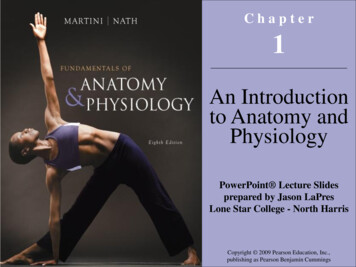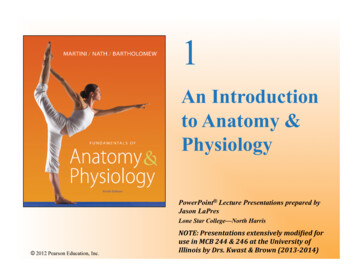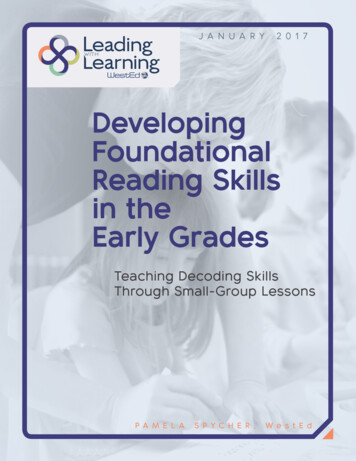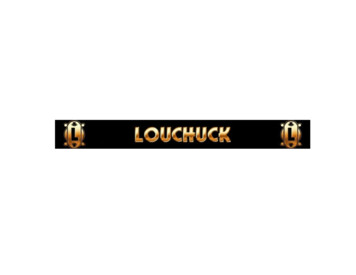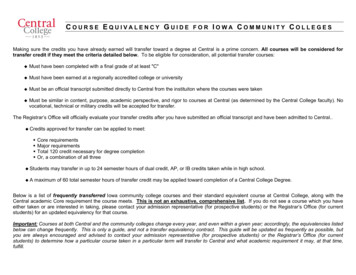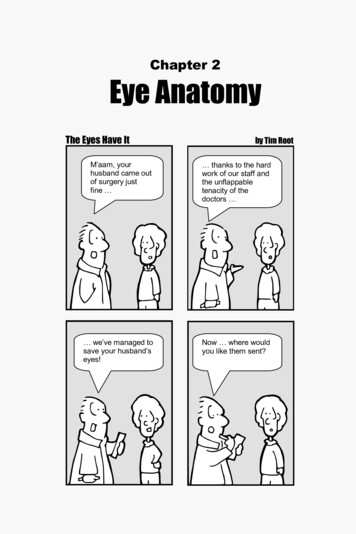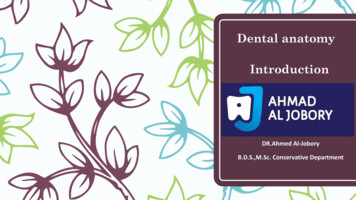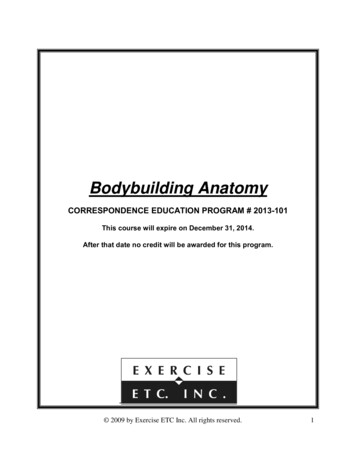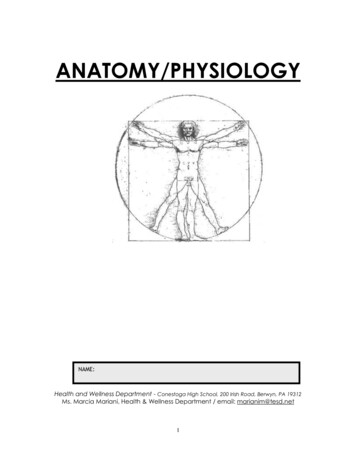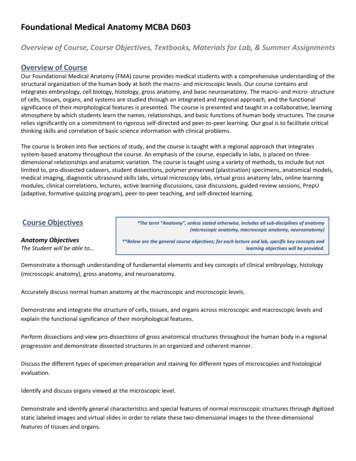
Transcription
Foundational Medical Anatomy MCBA D603Overview of Course, Course Objectives, Textbooks, Materials for Lab, & Summer AssignmentsOverview of CourseOur Foundational Medical Anatomy (FMA) course provides medical students with a comprehensive understanding of thestructural organization of the human body at both the macro- and microscopic levels. Our course contains andintegrates embryology, cell biology, histology, gross anatomy, and basic neuroanatomy. The macro- and micro- structureof cells, tissues, organs, and systems are studied through an integrated and regional approach, and the functionalsignificance of their morphological features is presented. The course is presented and taught in a collaborative, learningatmosphere by which students learn the names, relationships, and basic functions of human body structures. The courserelies significantly on a commitment to rigorous self-directed and peer-to-peer learning. Our goal is to facilitate criticalthinking skills and correlation of basic science information with clinical problems.The course is broken into five sections of study, and the course is taught with a regional approach that integratessystem-based anatomy throughout the course. An emphasis of the course, especially in labs, is placed on threedimensional relationships and anatomic variation. The course is taught using a variety of methods, to include but notlimited to, pro-dissected cadavers, student dissections, polymer preserved (plastination) specimens, anatomical models,medical imaging, diagnostic ultrasound skills labs, virtual microscopy labs, virtual gross anatomy labs, online learningmodules, clinical correlations, lectures, active learning discussions, case discussions, guided review sessions, PrepU(adaptive, formative quizzing program), peer-to-peer teaching, and self-directed learning.Course ObjectivesAnatomy ObjectivesThe Student will be able to *The term “Anatomy”, unless stated otherwise, includes all sub-disciplines of anatomy(microscopic anatomy, macroscopic anatomy, neuroanatomy)**Below are the general course objectives; for each lecture and lab, specific key concepts andlearning objectives will be provided.Demonstrate a thorough understanding of fundamental elements and key concepts of clinical embryology, histology(microscopic anatomy), gross anatomy, and neuroanatomy.Accurately discuss normal human anatomy at the macroscopic and microscopic levels.Demonstrate and integrate the structure of cells, tissues, and organs across microscopic and macroscopic levels andexplain the functional significance of their morphological features.Perform dissections and view pro-dissections of gross anatomical structures throughout the human body in a regionalprogression and demonstrate dissected structures in an organized and coherent manner.Discuss the different types of specimen preparation and staining for different types of microscopies and histologicalevaluation.Identify and discuss organs viewed at the microscopic level.Demonstrate and identify general characteristics and special features of normal microscopic structures through digitizedstatic labeled images and virtual slides in order to relate these two-dimensional images to the three-dimensionalfeatures of tissues and organs.
Define the major components of the human nervous system, including the cerebral hemispheres, brainstem,cerebellum, deep brain structures, cranial nerves, spinal cord, spinal nerves, sensory systems, motor systems, and theautonomic nervous system.Integrate basic concepts and principles of human anatomy as they pertain to clinical medicine.Discuss and describe embryology and anatomy, including variations and basic anomalies and abnormalities, with peers,faculty, and instructional assistants within the team-taught course.Imaging ObjectivesThe Student will be able to Provide an anatomical basis for the use of cross-sectional anatomy and the various forms of three-dimensional medicalimaging.Discuss physical characteristics of diagnostic ultrasound, the ultrasound machine operations, and ultrasound operationalfeatures in the generation of quality ultrasound images.Discuss basic skills in the use of the laptop ultrasound unit for acquisition and basic interpretation of ultrasound imagesusing B mode and/or Color Doppler.Discuss basic skills to obtain ultrasound images of the heart, abdominal aorta, inferior vena cava, liver, gallbladder,kidneys, urinary bladder, knee joint, thyroid gland, carotid arterial system, and internal jugular vein.Professional Development and Professional Behavior ObjectivesThe Student will be able to Demonstrate active problem-based learning and promote lifelong learning.Use critical thinking skills to correlate basic science studies with clinical entities.Understand and discuss how the scientific method is applied in the study of embryology and anatomy.Demonstrate the highest level of professional and ethical behavior and to act with integrity.Demonstrate the utmost professionalism and respect for our donors, the medical students “first patients,” who providethe opportunity and privilege of learning in the gross anatomy lab from their selfless gift through the Gift of Body (GOB)program.Work as a team member and interact professionally, respectfully, and appropriately with all faculty, staff, instructionalassistants, and peers.
Overview of Course Resources, Textbooks, and AtlasesBecome acquainted with Blackboard, and once posted, make sure you adequately go through all coursematerial (for example: syllabus, schedule, PPTs, dissection lab outlines, and study guides.) Review all materialbefore class and be prepared to discuss during each session.Below are the textbooks and atlases for the course. You may purchase the hardcopy or e-text for any of them.For some, you may access freely through the USC-SOM-C Library – you will need your UofSC and password.M-I Subject Guide, Foundational Medical Anatomyhttps://uscmed.sc.libguides.com/c.php?g 945077&p 7623009Remote Access plete Anatomy App – Required and purchased for students by USC-SOM-C*You will be given your access information during orientation week.Textbooks – Required Moore, Clinically Oriented Anatomy 9th Ed. Anatomy/p/9781975154066*AVAILABLE THROUGH USC-SOM-C LIBRARY FREE ACCESS THROUGH CLINICAL KEY nk/01PASCAL -323-61154-1Moore & Persaud, The Developing Human: Clinically Oriented Embryology 11th Ed.*Thieme Online Dissector (provided free to students by the Dept. of CBA)*Your customized Thieme Online Dissector will be available through MyCourse and will gain access duringorientation.Board Review Book – Required Board Review Series (BRS) Cell Biology & Histology, 8th Ed. (or any -Histology/p/9781496396358Histology Atlas – Required Berman, Color Atlas of Basic Histology 2nd OR 3rd Ed.* Reference, clean copies located in the museum of the gross anatomy lab and istology-Science/dp/0071402888Gross Anatomy Atlases – Required (choose one or both) Netter, Atlas of Human Anatomy, 7th Ed., 8th Ed. (or any edition)* *AVAILABLE THROUGH USC-SOM-C LIBRARY FREE ACCESS THROUGH CLINICAL alink/01PASCAL y, Atlas of Anatomy, 4th Ed. (or any /product/5620-atlas-of-anatomyVirtual Microscopic Image Collection – Required – Download all images BEFORE the 1st day of class*You will receive information how to access during orientation.
Board Review Books –RecommendedThe below are supplemental sources once your foundation is built to provide a rapid review of concise andhigh yield content before an exam, the NBME, and USMLE Step 1. Board Review Series (BRS) Gross Anatomy, 9th Ed. (or any edition) 1190380Board Review Series (BRS) Embryology, 6th Ed. (or any edition)Textbooks – Recommended Gartner, Textbook of Histology 5th Ed. (or any edition)* AVAILABLE THROUGH USC-SOM-C LIBRARY FREE ACCESS THROUGH CLINICAL alink/01PASCAL 78-0-323-67272-6Waxman, Clinical Neuroanatomy 28th Ed.*AVAILABLE THROUGH USC-SOM-C LIBRARY FREE ACCESS THROUGH ACCESS /permalink/01PASCAL USCCOL/b09qgf/alma991025834228205618Gross Anatomy Atlases – Recommended (choose one or more) Real Anatomy: 2.0 Web Version (digital, web atlas) *https://bcs.wiley.com/he-bcs/Books?action index&itemId 1118516729&bcsId -Atlas-of-Anatomy/p/9781975138707Rohen, Anatomy: A Photographic Atlas, 9th Ed. (or any edition)Grant’s Atlas of Anatomy, 15th Ed. (or any edition)Neuroanatomy Atlases – Recommended Felten, Netter’s Atlas of Neuroscience, 3rd Ed, 4th Ed. (or any edition)* *AVAILABLE THROUGH USC-SOM-C LIBRARY FREE ACCESS THROUGH CLINICAL alink/01PASCAL 9780323756549.htmlNolte’s The Human Brain in Photographs and Diagrams, 5th Ed. (or any edition)*AVAILABLE THROUGH USC-SOM-C LIBRARY FREE ACCESS THROUGH CLINICAL alink/01PASCAL otographs-and-diagrams-9780323598163.htmlHistology Atlases – Recommended Ovalle, Netter’s Essential Histology, 3rd Ed. (or any edition)* *AVAILABLE THROUGH USC-SOM-C LIBRARY FREE ACCESS THROUGH CLINICAL alink/01PASCAL 80323694643.htmlSlide Box through Histology Guide, http://histologyguide.org/slidebox/slidebox.html
Materials Needed for Gross Anatomy LabAll students are required to always wear appropriate attire and personal protective equipment (PPE) in the lab – clothedfrom neck to feet: lab coat, scrub top and pants, socks, and closed-toe shoes. You will have a locker to store yourbelongings, and you are encouraged to wash your scrubs and lab coat frequently. Especially when dissecting, you mustbe double-gloved.You will be provided with a set number of surgical masks for the semester. The surgical masks are not reusable, andyou may not store and reuse them. The surgical masks are for the gross anatomy lab only – you may not wear thosemasks outside of the gross anatomy lab.You will also be provided with a face shield with nose piece and visor. All components of the face shield are to bereturned at the end of the course.You are responsible for cleaning your PPE before and after each visit in the lab.You are responsible for appropriately storing your PPE.You may not wear reusable masks in the gross anatomy lab. While dissecting, you are expected to wear the surgicalmask covering nose and mouth with the face shield and visor.Anyone who fails to wear the specified PPE, will be asked to leave immediately and will not be allowed access untilthe appropriate PPE is donned.When studying in the museum (clean space) portion of the gross anatomy lab, you are expected to wear the maskcovering nose and mouth and also wear clean gloves. You may wear street clothes that are full length pants (noexposed legs) and short-sleeve shirts (no tank tops) and must stay within the clean-space museum.You are expected to wear the appropriate PPE in all parts of the gross anatomy lab even if you are the only user.Students need to obtain Combination lockClosed-toe shoes & socksMinimum of two pairs of scrubs* WASHED FREQUENTLY* Only to wear in lab Lab coat (color does not matter)* WASHED FREQUNETLY Non-latex gloves* Encouraged to purchase nitrile gloves* Prices 6/box Surgical blades* Each table will be provided with a starting supply of surgical blades.* Then, you are responsible for providing blades – advice, purchase as a table or dissecting group.* Surgical blades #22 – 35 for 100 blades/box
Summer AssignmentsOne of the best ways to succeed in Foundational Medical Anatomy (FMA) is to stay on top of the material.When you come to lecture or lab, you are expected to already have learned the material that is being covered.Use scheduled class time as a review to supplement what you read in the text, PPTs, atlas, online dissector, etc. Beprepared on day one of class to discuss the cell biology material being presented.Our course officially starts on Monday, August 8th at 9:00 am. Your first exam is scheduled for Thursday, August 18th,and it is comprehensive written exam with images on cell biology and histology. All questions in this first exam aremultiple-choice format. With that said, it would be best for you to be prepared before class begins on August 8th.The content covered on the first exam will be: Introduction to histology Cell biology Epithelium & glands Connective tissue and cells Blood, bone marrow, and hematopoiesis Bone & cartilage Muscle Chapters in Gartner’s BRS Cell Biology and Histology; In Gartner’s Textbook of Histology Human development, Embryology weeks 1—4 Chapters in Moore & Persaud, The Developing Human: Clinically Oriented EmbryologyRemember, some of your texts you have full, direct, free access via the USC-SOM-C Medical Libraryhttps://uscmed.sc.libguides.com/c.php?g 945077&p sYou will find a link called "Microanatomy Terms", a summary of terms put together by Dr. LaVoie and the other histologyfaculty. Please review this document and refer to it for terminology and structures you are expected to know, along withthe corresponding chapters in the BRS Cell Biology and Histology textbook.Dr. LaVoie has created a self-study, narrated PPT on the Introduction to Histology and Methods of Histology. You areexpected to review this document prior to August 8th.Also, you are expected to read, be familiar with, and review the following gross anatomy content. Introduction Chapter: Overview and Basic Concepts (pgs. 2-69)*in Moore, Clinically Oriented Anatomy Diagnostic Radiology: An Introduction to Clinical Anatomy (make sure the volume is on)* https://www.youtube.com/watch?v Aw3Opi2G5jAYou are strongly encouraged to review your medical terminology. Use this free review course.https://www.dmu.edu/medterms/
Felten, Netter's Atlas of Neuroscience, 3rd Ed, 4th Ed. (or any edition) * AVAILABLE THROUGH USC-SOM-C LIBRARY FREE ACCESS THROUGH CLINICAL KEY. . Ovalle, Netter's Essential Histology, 3. rd. Ed. (or any edition) * AVAILABLE THROUGH USC-SOM-C LIBRARY FREE ACCESS THROUGH CLINICAL KEY.
